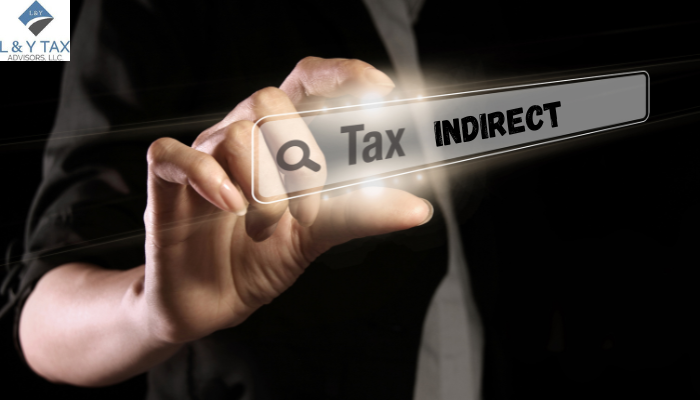
Which is an Indirect Tax?
Do you know what indirect tax is? Indirect tax definition is: A tax that is collected by one party in the supply chain (e.g., a manufacturer or retailer) and transferred to the government is known as an indirect tax. But which is an indirect tax? How does it work in the U.S.?
Indirect taxes are added to the cost of purchasing products or services. The customer bears the burden of paying them. Even if the producer or merchant collects the tax, the consumer pays it through increased pricing.
L&Y Tax Advisor explains which is an indirect tax, how it works, its common examples, and some relevant exceptions in the United States.
How does an Indirect Tax Work?
Direct taxes are paid directly to the government by individuals or companies. However, indirect taxes are gathered by one party and sent to the government.
The customer indirectly bears the cost of indirect tax through increased product costs. Indirect taxes include excise levies on goods like cigarettes, alcohol, and gasoline.
Regressive Nature of an Indirect Tax
Regressive taxes disproportionately impact those with lower incomes. Indirect taxes are commonly seen this way because the tax rate is the same for all taxpayers, irrespective of their income level.
For instance, a television’s import tariff is the same whether the buyer makes $25,000 or $150,000 yearly.
Lower-income customers may bear a greater cost from indirect tax, as it does not consider their financial situation.
Common Indirect Tax Examples
Import taxes are a well-known indirect tax that importers must pay when their goods enter the country. Customers indirectly pay this tax when they buy imported items, even if they are unaware of it.
Indirect taxes also include production-level levies like carbon emission costs transferred to customers. Value-added taxes (VAT) are also possible indirect sales taxes if they are applied at various stages of the production process.
Read: What is a VAT number in the US?
What are Indirect Taxes in the U.S.?
Sales taxes are one type of indirect tax in the United States. These are paid to companies rather than the government directly. Indirect taxes can include import taxes on goods brought into the United States. There is no national sales tax in the United States. However, businesses may increase prices to cover their tax expenses.
Impact of Indirect Taxes on Consumer Behavior
Indirect taxes pose a great impact on consumer spending patterns. They work by adjusting the final price of products and services. Businesses usually raise prices for customers to cover the increased expenses incurred by applying taxes like VAT or excise levies.
Therefore, customers can consume less taxed goods or change their preferences towards lower-taxed or untaxed alternatives. In sectors where excise taxes are frequently utilized to deter consumption, this behavioral shift is more noticeable.
Governments deliberately create these tax arrangements to strike a balance between generating revenue and achieving policy goals like environmental sustainability or public health.
Read: What is federal income tax liability?
Challenges with Business Compliance and Indirect Taxes
Businesses must resolve an intricate maze of rules. The management of indirect taxes also requires you to comprehend geographical variations and reporting requirements. They must correctly collect, record, and submit taxes like GST or sales tax in various locations, sometimes with varying exemptions and rates.
Non-compliance can result in audits, fines, or harm to your reputation. Additionally, companies must constantly modify their systems and procedures to comply with changing tax regulations and digital filing requirements.
By using tax guidance services, businesses may optimize their tax situations within the indirect tax framework, minimize risk, and expedite compliance while staying by current legislation.
The Bottom Line
Knowing which is an indirect tax can help you differentiate it from direct taxes. Regardless of income, indirect taxes are ordinary and impact all customers. The final cost-bearer is the customer through increased product prices, even if businesses get these taxes.
Connect with our tax consultancy services for further assistance.

